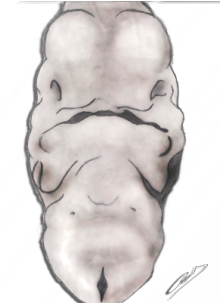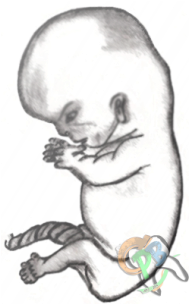History of Embryology

The study of embryology, the science that deals with the formation and development of the embryo and fetus, can be traced back to the ancient Greek philosophers. Originally, embryology was part of the field known as "generation," a term that also encompassed studies of reproduction, development and differentiation, regeneration of parts, and genetics. As early as the sixth century B.C., Greek physicians and philosophers suggested using the developing chicken egg as a way of investigating embryology.
Aristotle (384–322 B.C.) described the two historically important models of development known as preformation and epigenesis.
According to preformationist theories, an embryo or miniature individual preexists in either the mother's egg or the father's semen and begins to grow when properly stimulated. Some preformationists believed that all the embryos that would ever develop had been formed by God at the Creation. Aristotle actually favored the theory of epigenesis, which assumes that the embryo begins as an undifferentiated mass and that new parts are added during development. Aristotle thought that the female parent contributed only unorganized matter to the embryo. He argued that semen from the male parent provided the "form," or soul, that guided development and that the first part of the new organism to be formed was the heart.

Aristotle's theory of epigenetic development dominated the science of embryology until the work of physiologist William Harvey (1578–1657) raised doubts about many aspects of classical theories. Some historians think that Fabrici should be considered the founder of modern embryology because of the importance of his embryological texts: On the Formed Fetus and On the Development of the Egg and the Chick. Harvey's "On the Generation of Animals" was not published until 1651, but it was the result of many years of research. Although Harvey began these investigations in order to provide experimental proof for Aristotle's theory of epigenesis, his observations proved that many aspects of Aristotle's theory of generation were wrong.
Some naturalists produced very unreliable observations of early embryos, but Marcello Malpighi (1628–1694) and Jan Swammerdam (1637–1680), two pioneers of microscopy, provided observations that seemed to support preformation.
Some naturalists produced very unreliable observations of early embryos, but Marcello Malpighi (1628–1694) and Jan Swammerdam (1637–1680), two pioneers of microscopy, provided observations that seemed to support preformation.

Thus, some naturalists argued that the whole human race had preexisted in the ovaries of Eve, while others reported seeing homunculi (tiny people) inside spermatozoa. Other eighteenth century naturalists rejected both ovist and spermist preformationist views. One of the most influential was Casper Friedrich Wolff (1733–1794), who published a landmark article in the history of embryology, "Theory of Generation," in 1759. Wolff argued that the organs of the body did not exist at the beginning of gestation, but formed from some originally undifferentiated material through a series of steps. Naturalists who became involved in the movement known as nature philosophy found Wolff's ideas very attractive. During the nineteenth century, the cell theory, the discovery of the mammalian ovum by Karl Ernst von Baer (1792–1876), and the establishment of experimental embryology by Wilhelm Roux (1850–1924) and Hans Driesch (1867–1941) transformed philosophical arguments about the nature of embryological development.